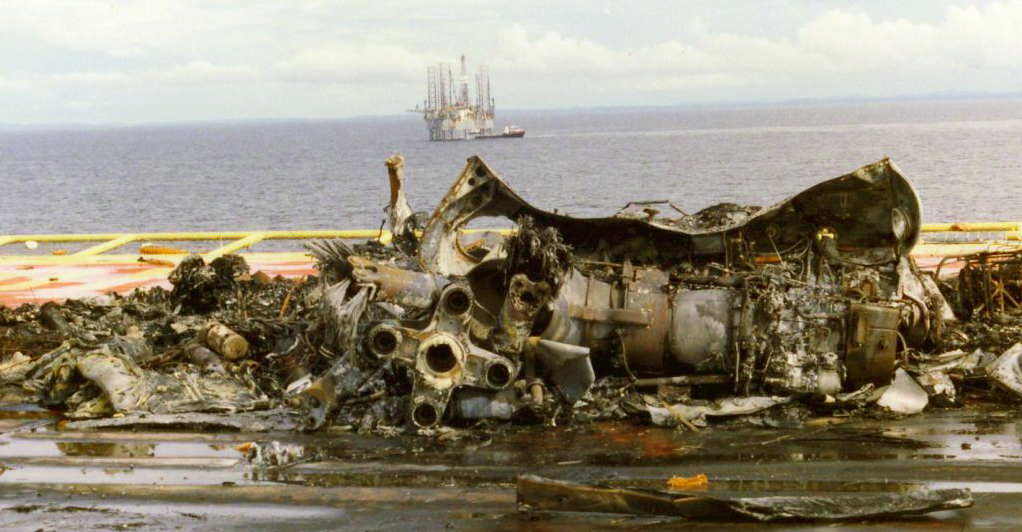Passive Fire-Retarding Helideck Designs
A number of helideck manufacturers offer aluminium helideck designs with a passive fire-retarding capability. Typically this is achieved by draining fuel through holes in the deck surface, into cavities filled with aluminium mesh. This starves the fire of oxygen and dissipates heat, extinguishing the flames and draining away unburnt fuel for collection. To show the range of providers, and the capabilities of such deck designs compared to steel decks, we highlight videos from three below.
Dutch company Bayards, market their self-extinguishing Safedeck design:
Aluminium Offshore, the Singapore based manufacturer of helidecks, has release a video that illustrates their XE Enhanced Safety helideck design:
UK company NCMP market their Firesafe design:
Spanish helideck manufacturer Helitecnica offer the Safe Aludeck design.
Each company is keen to point out that the UK Civil Aviation Authority (CAA) Standards for Offshore Helicopter Landing Areas (CAP437) allow passive fire-retarding decks to use seawater instead of foam in any Deck Integrated Fire Fighting System (DIFFS) fitted (see Chapter 5 para 2.11). This gives a reduction in complexity, maintenance and cost (capital and recurring).
This combination of a passive fire-retarding deck and DIFFS is particularly effective on Normally Unattended Installations (NUIs). NUI fire-fighting capabilities were the subject of Chapter 10 of CAP1145, which resulted from the CAA Review.
The Risk of Helideck Fires
One of the helideck manufacturers includes footage of a 2002 helicopter accident resulting in a fire on the helideck of a US Navy destroyer. It is worth noting that this involved an old generation military helicopter (a Sikorsky H-3, a type that entered service in 1959) suffering a loss of tail rotor drive while landing on a naval vessel in the Arabian Gulf. This aircraft type was designed before the advent of crash resistant fuel systems (CRFS), triggered by military experience during the Vietnam War. It is also worth noting that in that case all personnel survived.
Historically, the number of post crash fires on helidecks is small. In CAP1145 the CAA had to use a photograph a non-fatal accident that occurred in the South China Sea off Malaysia in 1985 as an illustration as no such fire has occurred on the UK Continental Shelf (UKCS).
Aerossurance is aware of a 2009 helideck fire in Saudi Arabia and again there were no fatalities in that fire. There was also a fire on a drilling rig in 2008 after a helicopter collided with one of the jack-up legs, but this look place away from the helideck.
In November 1994 a series of CRFS requirements were introduced into FAR-27 Amendment 27-30 for future civil helicopter certifications (and adopted into the next revision of the European JAR-29 [Change 1]). The FAA explained that:
The fuel containment and hazard elimination provisions contained in these proposals would, in the majority of cases, give occupants the time necessary to escape a survivable crash before a [Post Crash Fire] PCF could become critical. A crash resistant fuel system, CRFS, would not be expected to prevent all fires; however, a CRFS would, in the majority of impact survivable cases, either prevent a PCF or delay the sudden massive fire, or fireball, long enough to allow the occupants to escape. These proposed standards have been validated by military safety statistics and their adoption would significantly minimize the PCF hazard and its associated fatalities and injuries.
Service experience suggests the probability of a fatal helideck accident is relatively low, however passive fire-retarding decks remain a very effective mitigation.
Other Helideck Safety Resources
- Helideck Safety Alerts: Refuelling Hoses and Obstructions
- NTSB Recommendations on Offshore Gas Venting
- Mind the Handrail! – Walk-to-Work Helideck Hazard
- US BSEE Helideck A-NPR / Bell 430 Tail Strike
- Troublesome Tiedowns
- Helideck and Helicopter Egress Training Facilities
- Wrong Deck Landings
- FOD and an AS350B3 Accident Landing on a Yacht in Bergen
Aerossurance regularly assists oil and gas companies and vessel operators review and update their helideck procedures and adverse weather policies, examine helideck structural integrity issues and provide independent assurance of helideck readiness.
For advice on helicopter safety, helidecks, helicopter design & certification standards, risk management and aviation regulation, contact Aberdeen based aviation consultants Aerossurance: enquiries@aerossurance.com
Follow us on LinkedIn and on Twitter @Aerossurance for our latest updates.


Recent Comments